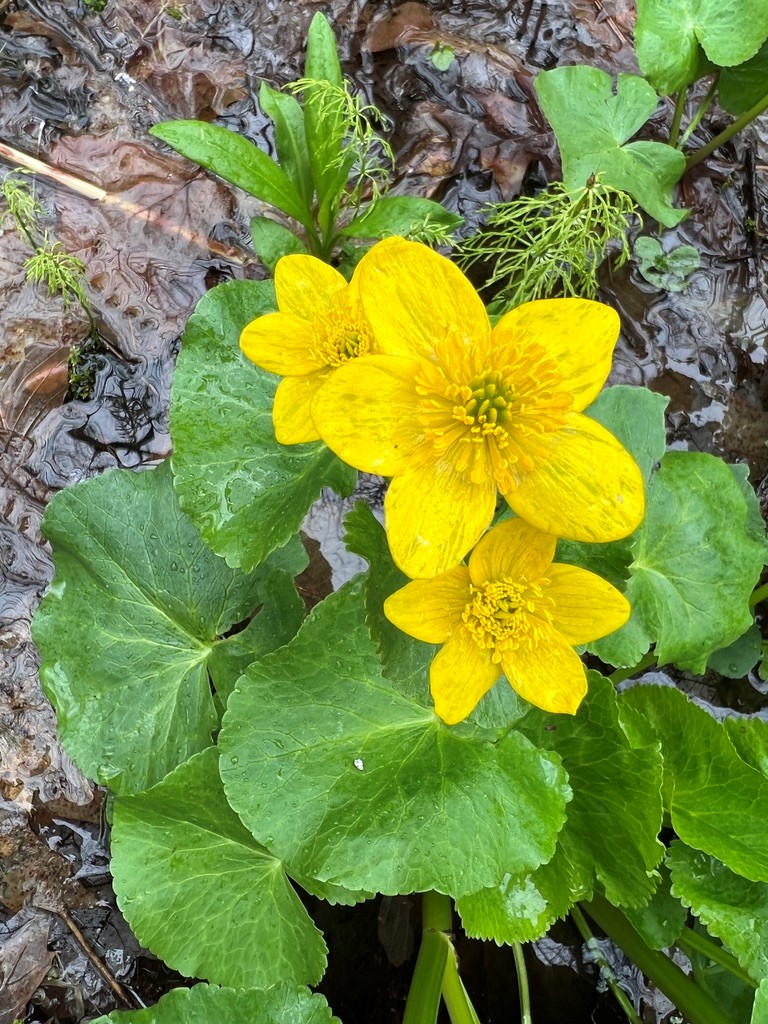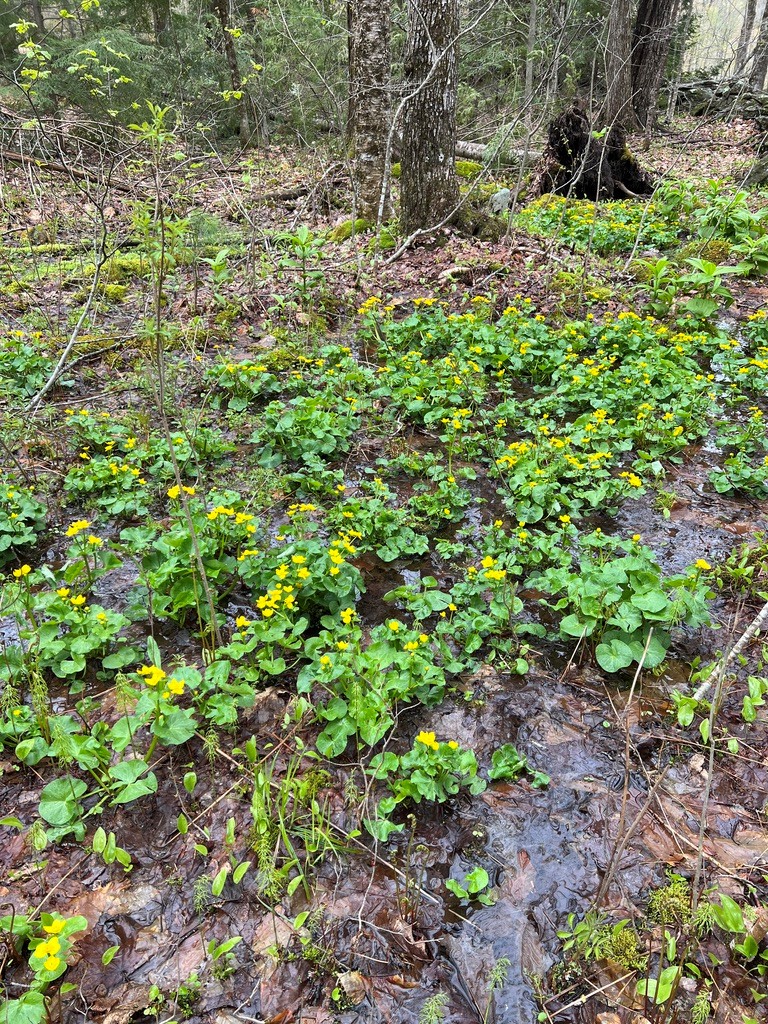
Beginning in March 2020 when the “COVID-19 lockdown” began, I decided to devote some time to wandering the forest of Dragonfly Farm. We had been producing maple syrup for use and giveaway for a few years, but I had never really investigated the forest land portion of the property, other than the sugarbush.

So, in early spring, when some of the lowland areas of the property become swampy, I noticed some plants growing in the water. Plump little green leafy plants, in a grouping, began to produce buds. Days later, the buds turned into very attractive yellow flowers. I had never seen these flowering plants, despite having an interest in plants and gardening for most of my life.
Research revealed that the plant is Yellow Marsh Marigold (Caltha palustris L.). Why marsh? According to the U.S. Forest Service, it is a plant of wet places, including seasonal forest wetlands. In fact, “palustris” refers to “swampy, marshy, or wet places.” Why marigold? Who knows—it is in the buttercup family and not related to marigolds. It is native to the northeast, including New Hampshire.
Of course, there’s always a downside—Marsh Marigolds can cause skin irritation, and, if consumed, are poisonous to cattle and horses. Well, maybe not a downside for the survival of the Yellow Marsh Marigold! Every Spring since 2020, I visit the Marsh Marigold patch, and all is well!